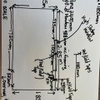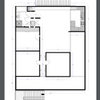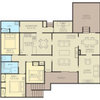Heating off-grid new-build: woodfired cooker & hydronic slab heating?
runsy
7 years ago
Featured Answer
Sort by:Oldest
Comments (14)
runsy
7 years agoRelated Discussions
Underfloor heating — worth the investment?
Comments (139)If those prices don't include the electrician's costs of connection then to me they don't match up and I'd say your supplier/installer can't do maths lol. Pricing will change between supplier and of course electricians, and of course I'm working off the impression that the floors are flat where you want it installed. If the quote includes the electrical work, as in it covers everything besides tiling to where you can switch it on, then it looks reasonable to me and sits around the ballpark of what we paid. With the electrician's connection costs included then the figures match up better between the bathrooms and the living area, looking at it from a total per m2 viewpoint. If it includes the floor covering as well, then I'd say get on the phone and book the job straight away before they realise their mistake lmao. For instance if the quote is just for material and install, without electrical connection then the two bathrooms are quoted at $166.66 per m2 and the living area is quoted at $53.57 per m2. A large difference at cost per m2. If however the quotes include the electrical connection then you can average out the m2 cost across all three rooms and it amounts to $73.53 per m2. The electrician would be charging the same price for connection of each room (with only minor differences) if there is nothing out of the ordinary in any room. That means it's a static cost in each room that could make the bathroom quotes look inflated, and the living room look on the cheaper side. When you have a m2 quote on something across multiple rooms of different sizes, it's important to factor in anything outside of materials that's included in the quote. Assuming the install could be considered standard (whether it be underfloor heating, tiling, carpet, etc.) there will be other costs involved such as labour hours, wiring connection, installation materials, etc. Some can be considered static such as the electrician installing a single thermostat in each room, whatever actual size that room may be. Others will be more fluid such as labour hours for the tradesmen doing the install - will take a lot longer to lay tiles in a room of 56m2 than it will to lay them in a room 6m2. Whenever you are given a quote involving installations by m2, it's important to get them to detail what exactly is included in the quote. If you don't do this you run the chance of ripping yourself off. Let's say you get 3 different quotes from underfloor heating suppliers who all give you different prices but without details. One may look more expensive than the other two but actually be cheaper overall due to including everything up to 'turn on' phase, where the other two may only include supplying and laying the underfloor heating with you having to organise your own electrician after install....See MoreNew Off Grid Rural Solar Passive Design for Wide Bay
Comments (69)we're building in Childers Qld (Zone 2) on top of a hill 120m above sea level with no chance of being built-in as we are on a 69 acre block. Quite windy all the time predominately from the SE. All outside doors will be security. Roof has vents in the gables on all four sides so I can leave open to purge heat during summer and close off in winter. Bed 2&3 doors used to be adjacent bathroom door for cross breezes but a layout change in the bathroom meant having its door on the east now. Not ideal but necessary. Dark colour unfortunately is dictated by our very red soil that will stain any light colour so had to go dark, would of preferred light. So I should make my eaves 1200mm all around?...See MoreNeed help with floor heating
Comments (13)As N.B. Interiors says, do your research if considering underfloor heating. Though they are talking about electric underfloor heating, which is frightfully expensive. The cost of running a hydronic underfloor system will be dependent on the heat source. A heat pump is 4 to 5 times more efficient than standard electric heating. Same technology as an air conditioner, though for the hydronic it's air to water, not air to air. Along with the heat source, there are other things that will effect the running costs. In slab hydronics has very high thermal mass, to very slow reaction times. Also, if the slab is not fully insulated, heat will be lost into the ground. In cool climates, a poorly insulated underfloor system can be very expensive to run. Another option is an in-screen hydronic system. This is where the top of the slab is insulated, hydronic tubing is laid, & a thin screed is poured on top. This system has a lower thermal mass, so faster reaction time. It's also much better insulated, so less susceptible to heat losses. This would be my preferred option. This is what you see on Grand Designs....See MoreCombined woodfire and heat pump hydronic heating
Comments (3)While I haven't personally tried the woodfired boiler/heat pump combo, it seems like a smart way to balance energy needs. Being off the grid adds another layer of consideration, but with proper setup, it sounds like a win-win. I remember when we were renovating our place, we debated similar options. Ended up going with a different setup, but I've heard great things about integrating wood-fired systems with modern tech. If you're feeling nervous, maybe reach out to local experts or even boiler repair London services for advice. Sometimes a chat with pros can ease those concerns....See Morerunsy
7 years agolast modified: 7 years agoJPM Creations
7 years agogreen design & consulting
7 years agolast modified: 7 years agorunsy thanked green design & consultingrunsy
7 years agoHunt Heating
6 years agoAnnie Hodberry
6 years agolast modified: 6 years agojimini tin
10 months ago
Sponsored





green design & consulting